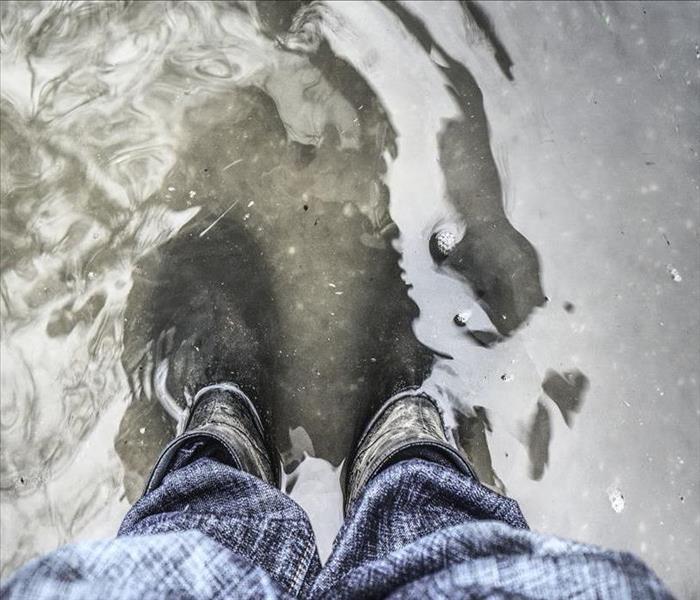Steps to Take When Water Floods Your Property
2/28/2022 (Permalink)
A flood can have a devastating effect on properties and property owners. The results are partial or total loss of properties, financial burden, loss of valuable documents, destruction of structures, health risk, and more.
A flood can happen at any time. There may be little to do to stop floods caused by severe storms. Other causes of floods are a broken dam, a broken tank, or a broken pipe. Do not be discouraged by the incident; instead, prepare yourself for emergency mitigation and restoration actions you can do by yourself before professionals arrive.
Below is a guide on what to do when water floods your property.
Safety First
You need to be extremely careful during a flood and take note of these two things. First is the fear of being carried away by the flood (this depends on the magnitude). The second is the fear of electrocution. When there's a flood, the first thing to do is to cut off the power supply from the main circuit breaker. Wear a protective boot and glove before doing this. Water is a conductor of electricity. There's a high risk of being electrocuted when it gets to an open switch, loose cable, or electrical appliance.
If you're unable to do this quickly or safely due to proximity of another reason, then you should evacuate all persons on the premises to a safe place.
Drain out the water
Naturally, when the flood subsides, the water level reduces as water flows away. For floods not caused by a natural disaster, locate the source of the flood and stop the flow before pumping out water from the building. The ones inside the building may not have a place to flow to. Wear protective boots and begin to drain the water outside with a pump.
You can use a bucket or bowl to remove water if you don't have a pump.
Dry out the building
Open all windows and doors and use fans or dehumidifier to dry out remnant water from the building.
Clean and disinfect the building
Flood carries microorganisms and bacteria around. Please get rid of them by cleaning thoroughly with soap and water and disinfecting all surfaces. Take out wet carpets to be cleaned and dried. Make sure you clean all edges to prevent mold from forming later. Take out all curtains and clothes and have them washed. Remove damaged items.
Dry and repair items
There's almost no item flood cannot damage. Nonetheless, quickly dry soaked items like furniture, clothes, carpets, paintings, electronics. You may be lucky to find some electronics still functional after drying. It's important to dry all electronics before powering; better still, leave electronics for professionals to handle.
Early response and cleaning will help you mitigate property damage. The longer it takes to clear out water from a property or clean items, the lesser the chance of recovering items. Quick response lower the risk of losing valuable items.




 24/7 Emergency Service
24/7 Emergency Service
